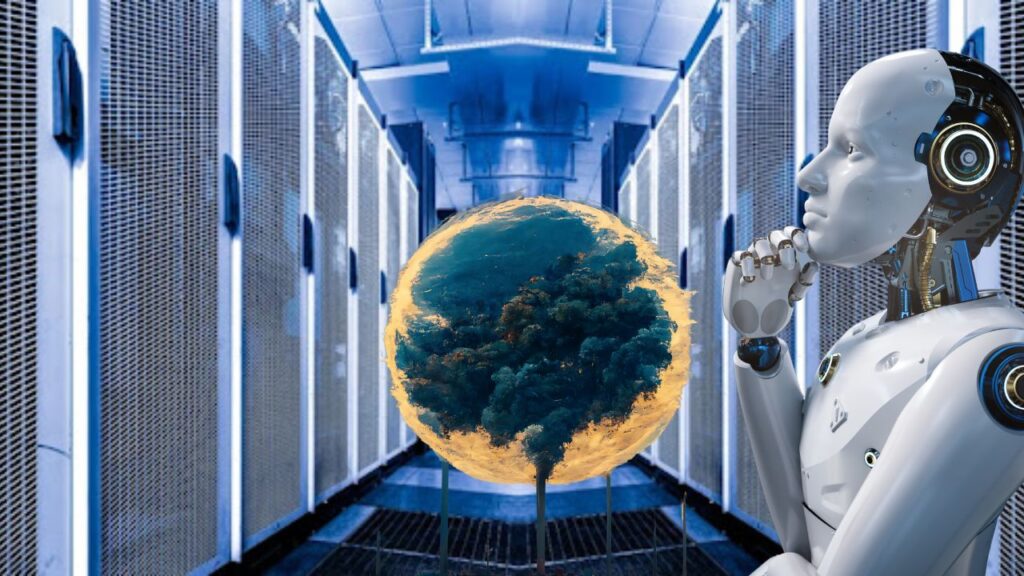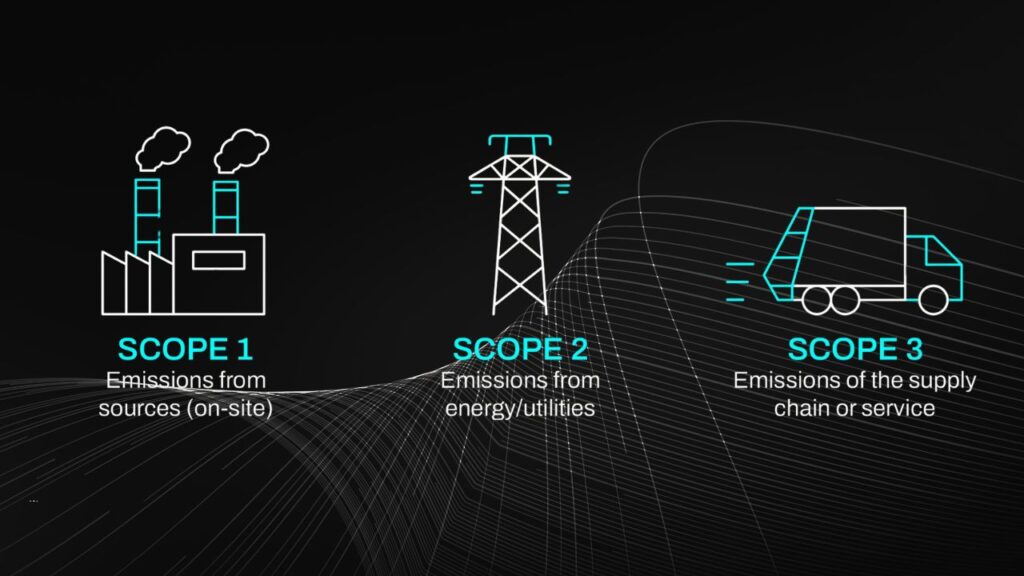Carbon Emissions From Tech Sector Rise With AI Expansion: The rapid expansion of artificial intelligence (AI) is driving a significant increase in carbon emissions from the technology sector, according to a recent report by the International Telecommunication Union (ITU), a United Nations specialized agency. This growth, largely fueled by the rising energy demands of data centers supporting AI workloads, is raising alarm bells about the environmental impact of the digital revolution.

Between 2020 and 2023, major technology companies such as Amazon, Microsoft, Alphabet (Google), and Meta reported a 150% average increase in their indirect carbon emissions. These emissions primarily stem from electricity consumption, heating, and cooling in their vast data centers that power AI services. The trend threatens global climate goals and underscores the need for urgent action in the tech industry to balance innovation with sustainability.
Carbon Emissions From Tech Sector Rise With AI Expansion
| Highlights | Details |
|---|---|
| 150% Average Increase in Indirect Emissions | Amazon +182%, Microsoft +155%, Meta +145%, Alphabet +138% (2020–2023) |
| Potential AI-Related Emissions | Up to 102.6 million tonnes of CO₂ equivalent per year |
| Data Center Electricity Growth | Power demand growing four times faster than global electricity consumption |
| Reporting and Transparency Issues | Market-based carbon accounting underreports real emissions by up to 55% |
| Clean Energy Initiatives | Nuclear energy deals, renewable power purchase agreements (PPAs), AI-driven efficiency upgrades |
| Environmental Impact Beyond Carbon | E-waste generation and substantial water use for cooling |
| Official ITU Report | Full report and data |
The tech sector’s indirect carbon emissions have surged dramatically due to AI’s rising energy demands, challenging the sustainability credentials of global digital infrastructure. While industry leaders are pioneering renewable energy contracts, nuclear deals, and efficiency upgrades, the pace of AI growth means urgent, coordinated action is essential.
Tech professionals must lead efforts to accurately measure emissions, optimize workflows, and advocate for cleaner energy. By doing so, the promise of AI can be realized without compromising the health of our planet.
Understanding the Growth in Tech Sector Emissions
What Are Indirect Emissions?

In corporate carbon accounting, indirect emissions (Scope 2 emissions) refer to the greenhouse gases produced from the generation of purchased electricity, heating, and cooling consumed by a company. These are distinct from direct emissions (Scope 1) generated onsite from fuel combustion or company-owned vehicles.
In the context of the tech sector, indirect emissions mostly arise from powering data centers and cooling infrastructure, where AI models are trained and deployed. Because data centers run continuously and require immense energy, even modest increases in AI workloads can cause significant emissions increases.
Why Are AI Systems So Energy Intensive?
Training state-of-the-art AI models requires vast computational resources. For example, training a large transformer model like GPT-3 involves performing trillions of mathematical operations across thousands of GPUs over weeks. This process can consume hundreds of megawatt-hours (MWh) of electricity, roughly comparable to the annual energy use of dozens of average households.
Once deployed, AI models demand further energy to serve real-time user requests, run inference workloads, and maintain system availability. AI workloads are often hosted in large hyperscale data centers that house tens of thousands of servers.
The Numbers Behind the Surge
Emission Increases Among Leading Tech Firms

According to the ITU’s analysis of sustainability reports from major companies:
- Amazon’s indirect emissions increased by 182%
- Microsoft’s increased by 155%
- Meta’s by 145%
- Alphabet’s (Google) by 138%
This is primarily due to expanded data center operations supporting AI services like cloud AI platforms, natural language processing tools, and recommendation engines.
Data Center Power Consumption
Global data centers consumed about 460 terawatt-hours (TWh) of electricity in 2022, which is roughly 2% of global electricity use — more than the total electricity consumption of countries like Brazil or the UK. The portion used specifically for AI-related workloads is growing rapidly, with data centers in regions like Northern Virginia projected to consume energy comparable to 6 million households by 2030.
Environmental Impacts Beyond Carbon
- Electronic waste (e-waste): Rapid hardware refresh cycles to support cutting-edge AI hardware accelerate the generation of e-waste, estimated to add an extra 1.2 to 5 million tonnes by 2030 globally, stressing recycling infrastructure.
- Water usage: Cooling data centers often involves significant water consumption. The ITU reports that by 2027, AI data center cooling could consume 6 to 6.6 billion cubic meters of water annually, equivalent to the yearly water use of millions of people.
Challenges in Carbon Accounting and Reporting
Market-Based vs. Location-Based Emissions
Tech companies often use market-based carbon accounting, which credits them for renewable energy certificates (RECs) and carbon offsets, even if the physical electricity used is generated from fossil fuels. This method can lead to significant underreporting of actual emissions.
A recent analysis by Financial Times found that Microsoft’s location-based emissions (actual emissions based on grid use) were 55% higher than its market-based figures in 2022.
How Are Tech Companies Responding?
1. Investing in Clean Energy
- Renewable Energy: All the major firms have committed to purchasing renewable power through long-term power purchase agreements (PPAs). For example, Google was carbon neutral since 2007 and aims for carbon-free energy 24/7 by 2030.
- Nuclear Energy Deals: Recognizing the limits of renewables, companies are now partnering on nuclear power projects:
- Microsoft is collaborating to reopen the Three Mile Island nuclear plant for clean energy.
- Meta secured a 20-year contract for nuclear power, signaling a shift towards more reliable zero-carbon sources.
2. Improving Data Center Efficiency
- AI-driven cooling and power management: Using AI itself, data centers optimize cooling cycles, server loads, and power distribution to reduce waste.
- Liquid cooling: Emerging as a more efficient method than air cooling, liquid cooling reduces power usage and enables denser hardware packing.
- Chips and architecture: Companies are investing in custom silicon chips designed for lower power consumption per operation.
3. Carbon Offsetting and Removals
- Microsoft launched a $760 million Climate Innovation Fund supporting carbon removal technologies like direct air capture.
- However, while offsets help balance emissions, experts warn they should not replace concrete reductions in energy use and emissions.
Practical Guidance for Tech Professionals
Measuring and Reporting
- Adopt location-based carbon accounting to reflect actual grid emissions.
- Include indirect emissions (Scope 2 and 3), e-waste, and water footprint in sustainability reports.
- Use tools like Green Software Foundation’s Carbon Aware SDK to estimate emissions for cloud workloads.
Energy Procurement and Workflow Optimization
- Advocate for purchasing renewable energy directly from projects near data centers.
- Schedule AI training and inference during times of high renewable availability or off-peak hours.
- Optimize AI models to require less computation without sacrificing accuracy, using techniques like model pruning, quantization, and efficient architectures.
Lifecycle and Circular Economy Practices
- Develop programs for server reuse, repair, and recycling.
- Partner with certified e-waste recyclers to minimize environmental harm.
- Design hardware with sustainability in mind—favor modular, repairable designs.
Advocacy and Infrastructure
- Encourage investment in modernized power grids capable of integrating more renewable energy.
- Push for policies supporting clean energy innovation and climate accountability in tech.
A Five-Step Guide to Greener AI Deployment
| Step | Action |
|---|---|
| 1. Baseline Your Impact | Conduct comprehensive audits of energy, water, and emissions for AI projects. |
| 2. Set Clear Reduction Targets | Define achievable goals for cutting emissions and energy use over time. |
| 3. Procure Clean Energy | Secure PPAs, consider nuclear, and ensure renewables power your data centers. |
| 4. Optimize AI Workflows | Use efficient models and schedule workloads intelligently. |
| 5. Report Transparently | Share detailed emissions data, including Scope 1–3, water, and e-waste metrics. |
MIT Engineers Develop New 3D Printing Method to Reduce Waste and Enable Complex Designs
Robotic Transfer Technique Enhances Scalability of 2D Materials for Device Integration
Child Who Received CAR-T Cancer Therapy Remains Disease-Free 18 Years Later
FAQs About Carbon Emissions From Tech Sector Rise With AI Expansion
1. What are Scope 1, 2, and 3 emissions?
- Scope 1: Direct emissions from owned or controlled sources (e.g., company vehicles, onsite fuel).
- Scope 2: Indirect emissions from purchased electricity, heat, or cooling.
- Scope 3: All other indirect emissions in the value chain, including supplier activities, product use, and waste.
2. How much energy does training a large AI model consume?
Training a large model like GPT-3 can use hundreds of MWh, equivalent to several hundred homes’ yearly electricity use.
3. Can renewable energy fully power AI data centers?
Renewables are growing but currently constrained by grid stability and availability. Nuclear energy and improved grid infrastructure are critical complements.
4. How does water usage affect AI sustainability?
Water is heavily used for cooling data centers, and in water-scarce regions, this raises sustainability concerns.
5. What role can software engineers play?
Software engineers can optimize code, reduce computational waste, choose green cloud regions, and participate in sustainability initiatives.






